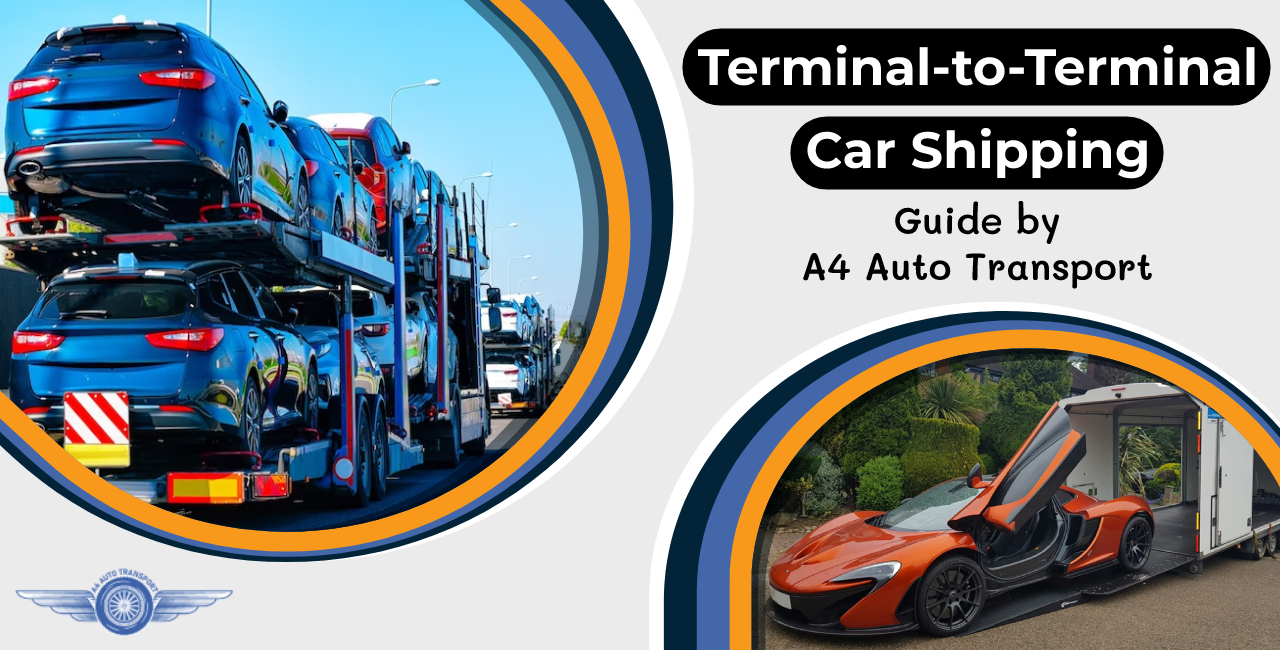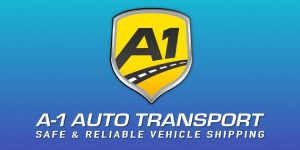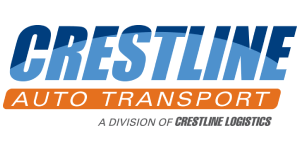
The best car shipping companies excel at terminal-to-terminal car shipping in the USA, offering a cost-effective solution for your vehicle transportation needs. Understanding this service, its benefits, drawbacks, and operational aspects can significantly streamline your shipping experience.
Key Highlights
- Save money & control your schedule: Skip door-to-door costs & choose drop-off/pick-up times when shipping your car across the USA via terminals.
- Prepare your car & research well: Ensure vehicle readiness, compare top companies like AutoStar & Montway, & understand terminal requirements for a smooth journey.
- Convenience vs. cost: Weigh the pros & cons (flexibility, lower rates) of terminal shipping against door-to-door ease to find the perfect fit for your needs.
What is Terminal to Terminal Car Shipping?
Terminal to terminal car shipping is a vehicle transport service where cars are dropped off and picked up at specific terminals designated by the shipping company. Rather than door-to-door delivery, where the vehicle is collected and dropped off at specific addresses, terminal shipping requires vehicle owners to take their cars to a designated terminal for shipping and pick them up at another terminal at the destination.

AutoStar Transport Express
Our Rating: 4.7/5
Pros and Cons
Pros
- International Services.
- International Shipping.
- Competitive pricing offered.
- Affordable Prices.
Cons
- Guaranteed pickup dates.
- Upfront deposits.
Summary
AutoStar Transport Express gives proficient vehicle transport services, quality-driven, and reasonable vehicle dispatching solutions in Alaska. AutoStar began as a moderately small vehicle delivering company, yet over the most recent 16+ years, have prospered and got one of the main auto vehicle suppliers in the United State.
AutoStar just utilize the best vehicle carriers and deal with all your coordination’s whether you need homegrown or global vehicle transportation. And Auto Star Transport Express has solid experience of vehicle delivery to Alaska with 1000+ surveys on Google and Transportreviews.com.

Montway Auto Transport
Our Rating: 4.3/5
Pros and Cons
Pros
- Door to Door Car Shipping.
- International Shipping.
- Strong customer satisfaction and industry ratings.
- Free vehicle shipping insurance.
Cons
- No shipping services for recreational vehicles or personal watercraft.
Summary
Montway Auto Transport is one of the most popular auto transport brokers in the Alaska car shipping industry. The company provides standard shipping services, including open carrier and enclosed carrier, and several optional services like door-to-door transport, guaranteed pickup dates, expedited shipping, and Alaska car shipping, for an additional cost. The car shipper does not currently offer terminal-to-terminal shipping.
Montway Auto Transport works with over 15,000 vetted carriers to provide affordable shipping services, which are regularly lower than competitors’. Here are a few sample quotes received from Montway Auto Transport for an operable 2018 Honda CR-V using door-to-door delivery service.

A1 Auto Transport
Our Rating: 4.2/5
Pros and Cons
Pros
- No deposit upfront to schedule.
- International Shipping.
- Affordable Prices.
Cons
- No first responders and medical personnel.
Summary
The longer the distance, the more factors come into play during auto transportation. Once you cross over to another state, though shipping your car isn’t a problem, you must first make sure it meets the legal requirements there. You may also need a new driver’s license if you’re moving permanently.
A1 Auto Transport can ship your car to any part of the US, as well as to another country. To transport an antique or luxury vehicle to or from Miane, clients are usually looking for the highest level of safety and speed A1 Auto Transport can offer. For this reason, A-1 auto transport recommend its enclosed auto carriers. They are a bit more expensive, but they’re also superior in every other way.

Road Runner Auto Transport
Our Rating: 4.0/5
Pros and Cons
Pros
- Cost effective.
- Flexibility.
- Excellent customer service.
Cons
- Expense.
- No Rural Service.
Summary
Road Runners robust systems enable us to continually assess the strengths of various carriers and monitor prevailing market rates. No matter what their transportation needs, Alaska clients trust that they can rely on us to provide the best possible solution and know that the culture of continuous process improvement will deliver the added value they deserve. Road Runner customers rely on its comprehensive knowledge of import and export processes and regulations that enables us to design custom, cost-effective, end-to-end international transportation solutions for any size load.

Crestline Auto Transport
Our Rating: 3.5/5
Pros and Cons
Pros
- Safe, and stress-free experience.
- The Leader In The Auto Transport Carrier.
- Integral Management.
Cons
- More expensive.
- Can be more time consuming.
Summary
Crestline Auto Transport specializes in enclosed transport, offering top-notch service for high-end and classic vehicles. With a focus on personalized customer service and attention to detail, they ensure the safe and secure transportation of valuable vehicles. Their professionalism, care, and positive customer reviews make them a reliable choice for enclosed car shipping.
Costs and Times for Terminal-to-Terminal Car Shipping in the USA
Estimating the cost and time for terminal-to-terminal car shipping depends on several factors, including:
- Distance: The further the distance, the higher the cost and longer the transit time.
- Vehicle type and size: Larger and heavier vehicles typically cost more to ship.
- Shipping season: Peak seasons like summer and holidays can see higher demand and costs.
- Carrier availability and routes: Different companies have varying pricing and coverage areas.
- Additional services: Enclosed transport, expedited delivery, and insurance can add to the cost.
However, to give you a general idea, here’s a breakdown of average costs and transit times for popular shipping routes within the USA:
| Route | Distance (miles) | Average Cost | Average Transit Time (days) |
| East Coast to West Coast | 2,500-3,000 | $900-$1,500 | 7-10 |
| Midwest to West Coast | 1,500-2,000 | $700-$1,200 | 5-7 |
| East Coast to Gulf Coast | 700-1,000 | $400-$700 | 3-5 |
| Midwest to Gulf Coast | 500-700 | $300-$500 | 2-4 |
| Within State Shipping | 100-500 | $200-$400 | 1-3 |
Rather than diving into what terminal-to-terminal auto shippers do in more detail, let’s discuss your car shipping options first. When it comes to car carriers, you’ve got three choices:
- Enclosed car carriers: Enclosed car carriers are the most expensive option. Therefore, they’re usually reserved for collectors, vintage, and exotic cars.
- Open car carrier: Open carriers are today’s standard carriers. Combined with terminal transportation, they remain one of the most cost-effective options. However, your car will not be protected from weather, gravel, dirt, and other elements associated with highways and freeways. Almost 90 percent of automobiles are transported this way, and it is a great option for daily drivers and commuter cars.
- Flatbed auto transports: The transportation of vehicles over flatbeds is exceedingly rare. Therefore, it’ll cost you more than other options. You should also expect longer wait times throughout every step of the process, from dispatch to pick up and transport.
Why? Since your car will not be picked up and delivered to the two addresses you stipulate, you will have to arrange to have it delivered and picked up from terminals. Usually, these facilities are located in or near major cities. In other words, the trucker that you work with just transports your car between terminals.
What’s more important to you: keeping a specific budget or convenient pickup and delivery? Terminal-to-terminal shippers may be the best choice for you if it’s all about the money.
It may be as simple as setting up meetings at times and places that are convenient for both you and your driver. This way, you can avoid terminals altogether. Although meeting points won’t be as close to your residence as door-to-door shipping, if you live in a big city, there are likely to be several convenient places to meet up.
Advantages of Terminal-to-Terminal Auto Transport
- Convenient door-to-door service.
- Cost-effective option.
- Increased security.
- Flexible scheduling.
- Reduced wear and tear.
- Suitable for long-distance transportation.
- Tracking and monitoring capabilities.
- Expert handling and equipment.
Disadvantages of Terminal to Terminal Auto Transport
- Limited terminal locations.
- Additional handling.
- Potential for delays.
- Lack of immediate access to the vehicle.
- Limited customization options.
- Responsibility for terminal fees.
- Potential for vehicle storage fees.
- Limited personal oversight.
Terminal-to-terminal car transport can be a suitable option if you live near designated terminals and prioritize cost savings. It requires dropping off and picking up your vehicle at these locations. Consider convenience, cost, flexibility, vehicle condition, and time constraints. If terminals are easily accessible and you’re willing to arrange transportation to and from them, this method can be a cost-effective choice. It’s important to research the best car shipping companies to ensure reliable service and a positive experience.
Assess your specific needs and location to determine if terminal-to-terminal car transport, provided by reputable companies, aligns with your priorities and outweighs potential inconveniences.
How Does Terminal to Terminal Shipping Work?
Understanding the process involved in terminal shipping is crucial before opting for this service.
Choosing the Right Company
- Reputation and Reviews: Research the company’s history, online reviews, and customer testimonials to gauge their reliability and quality of service.
- Experience with Terminal Shipping: Ensure the company has experience handling terminal-to-terminal shipments and understands the specific requirements of this method.
- Licensing and Insurance: Verify the company is licensed and bonded, and that they offer adequate insurance coverage for your vehicle during transport.
- Quote Comparison: Get quotes from multiple companies to compare pricing, transit times, and additional services offered.
Preparation for Terminal Shipping
- Vehicle Maintenance: Get a pre-shipment inspection and address any mechanical issues to ensure safe transport.
- Clean and Empty the Car: Remove all personal belongings, valuables, and flammable materials from the vehicle.
- Document the Condition: Take detailed photos and videos of the car’s exterior and interior to document its condition before shipping.
- Disable Alarms and Tracking Devices: Temporarily disable any car alarms or tracking devices to avoid false triggers during transport.
- Fuel Level: Maintain a moderate fuel level (around 1/4 to 1/2 tank) to avoid spillage or running out of gas during transport.
Terminal Requirements and Restrictions
- Terminal Location: Choose a terminal convenient for both drop-off and pick-up, considering your schedule and distance.
- Vehicle Acceptance: Familiarize yourself with the terminal’s size and weight restrictions, as well as any limitations on vehicle types or modifications.
- Storage Fees: Understand any potential storage fees at the terminal if your car needs to wait for transport.
- Terminal Hours: Check the terminal’s operating hours for drop-off and pick-up to avoid missed appointments or delays.
Safety Measures
- Locking and Securing: Ensure all doors and windows are securely locked and consider using an additional steering wheel lock for added security.
- Valuables Removal: Do not leave any valuables or sensitive documents in the car during transport.
- Insurance Coverage: Double-check your insurance policy to ensure it covers car shipping and understand any deductibles or limitations.
- Communication with Carrier: Maintain open communication with the shipping company and track your vehicle’s progress during transport.
Terminal to Terminal vs. Door to Door
| Feature | Terminal to Terminal | Door to Door |
| Cost | Lower | Higher |
| Convenience | Less convenient (requires driving to terminals) | More convenient (pick-up and delivery at your doorstep) |
| Flexibility | More flexible scheduling at terminals | Less flexible scheduling due to carrier pick-up and delivery windows |
| Control | More control over drop-off and pick-up times at terminals | Less control over exact pick-up and delivery times |
Tips for a Smooth Terminal Shipping Experience
- Book your shipment in advance, especially during peak seasons.
- Arrive at the terminal on time for your drop-off appointment.
- Obtain all necessary paperwork and receipts from the terminal.
- Inspect your vehicle thoroughly upon pick-up at the destination terminal.
- Report any damage to the shipping company immediately.
Environmental Impact
Terminal-to-terminal shipping generally has a lower environmental impact than door-to-door shipping due to:
- Fuel efficiency: Transporting multiple cars on a single carrier reduces fuel consumption per vehicle.
- Reduced emissions: Fewer individual carrier trips lead to lower overall emissions.
Conclusion
In conclusion, terminal to terminal car shipping presents a cost-effective and convenient option for transporting vehicles across distances, but it requires careful consideration of location, readiness, and company choice for a smooth experience.
FAQ’s
No, terminal to terminal shipping is available for both domestic and international shipments. It provides a reliable and efficient solution for transporting goods across different locations.
You can consult shipping and logistics companies or use online resources that provide information about terminal locations based on your specific region or area.
Yes, most shipping companies provide tracking services that allow you to monitor the progress of your shipment from the origin terminal to the destination terminal. This helps you stay informed about the status and estimated delivery time of your goods.
While terminal-to-terminal shipping has its advantages, there are a few limitations to consider:
- Transportation to and from the terminals: The sender and recipient need to arrange transportation to and from the terminals, which may add complexity and additional costs.
- Time and distance: Terminal-to-terminal shipping may take longer if the terminals are located far apart, especially for international shipments.
- Size and weight restrictions: Some terminals have limitations on the size and weight of packages they can handle, so it’s essential to check the specific requirements beforehand.
The specific documentation required may vary depending on the carrier, type of goods being shipped, and the destination. However, common documents include the bill of lading, commercial invoice, packing list, and any necessary permits or licenses for restricted items. It’s advisable to check with the carrier or consult a shipping agent to ensure you have the correct documentation.




